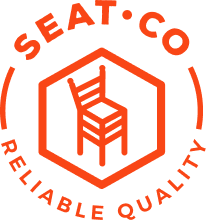Mastering the Numbers: The Secret Formula for Rental Business Success
Written by: Marcelo Flores
Do you feel your company is stuck or having a hard time identifying profitable
investments or not knowing which of your investments are the most profitable ones? If
your team makes financial decisions based on instinct, you’re not alone. This guide is
here to help. We’ll clarify ROI and its specialized form in the rental industry, rROIC, to
drive your business growth.
If you’re in business, you’ve likely heard the term “Return on Investment” or ROI. But do
you really know what it truly means and why it’s crucial for your success? Let’s break
down the complexities of ROI, especially focusing on its unique aspects in the rental
industry.
Table of Contents:
- What’s the Big Deal About ROI?
- The Tools You Can’t Do Without
- Understanding Rental Return on Invested Capital (rROIC)
- The rROIC Calculator: Your Ultimate Tool for Smart Investment Decisions
- Common Pitfalls: Mistakes to Avoid in ROI Calculation
- Beyond the Numbers: Qualitative Factors That Affect ROI
1. What’s the Big Deal About ROI?

It’s a crucial part of your business, and it is the key to success in business decision
making. Think of it as a report card on your investments. It tells you if you’re doing good
business or if you need to make any adjustments.
It’s a way to measure the effectiveness of every investment you make in your business,
and in the rental industry, understanding ROI takes on a whole new layer of complexity
with its specialized form, rROIC.
But before we dive into the details, let’s start with the basics. How does ROI work? At its
core, ROI is a simple formula that compares the net profit of an investment to its initial
cost. It’s a percentage that tells you how much money you’ve made—or lost—on that
investment. The higher the percentage, the better your investment is performing.
Breaking Down the Classic ROI Formula
Let’s start simple. The basic formula to figure out ROI is:
ROI: (Net Profit / Total Investment) x 100
Here’s what those terms mean:
- Net Profit: This is all the money you’ve made from your investment, minus what you spent.
- Total Investment: This is how much you initially paid, plus any extra costs along
the way.
You must know where these numbers came from, if not, you can miss things and have
inaccurate information.
2. The Tools You Can’t Do Without

Calculating ROI isn’t a guessing game. You need the right tools and documents to get
an accurate picture.
The first step is knowing what to measure, and this is why the Cost of Doing Business
Report (CODB) and the Profit and Loss Statement (P&L) are essential.
These reports give you a detailed breakdown of your expenses, revenue, and other
financial metrics.
3. Understanding Rental Return on Invested Capital (rROIC)

rROIC is a bit more complicated than standard ROI, but it’s incredibly useful. This
specialized formula, published by the American Rental Association, is special made for
the rental industry.
Here’s how you calculate rROIC:
(Rental Rate x Utilization) – (Maintenance + Repair Costs) ÷ (Acquisition Cost –
Residual Value) = rROIC
This formula considers not just how much you’re making, but also how often the
equipment is being used and what it costs to maintain it.
The Long and Short of rROIC
rROIC isn’t just a one-time thing. You need to think about how your equipment will pay
off both now and in the future. You must understand both the immediate and long-term
implications of your investments.
The Many Variables That Affect rROIC
When you’re juggling so many different types of equipment, a lot of factors can influence
your rROIC. Here’s a rundown:
- Brand Reputation: The better the brand, the more likely the equipment will have a higher ROI.
- Financing Options: Favorable financing can reduce your upfront costs, improving
your ROI. - Warranty: A good warranty can save you a lot in maintenance and repair costs.
- Preventive Maintenance Programs: Regular maintenance can extend the life of
your equipment, improving its ROI. - Parts Availability: Easy access to spare parts can reduce downtime, boosting
ROI. - Sales and Service Team: A knowledgeable team can help you make smarter
investment decisions. - Equipment Longevity: The longer your equipment lasts, the higher its ROI will be.
- Used Equipment Market: A strong market for used equipment can boost your
ROI by providing a good resale value.
We know that calculating rROIC can be a complex task, which is why we’ve developed
a specialized calculator to make your life easier.
4. The rROIC Calculator: Your Ultimate Tool for Smart Investment
Decisions

Calculating rROIC manually can be a daunting task, especially when you’re dealing with
a wide range of equipment and variables. That’s why we’ve developed a specialized
rROIC calculator to simplify the process for you. This tool is designed to help you make
more informed and accurate purchasing decisions, considering all the factors that can
influence rROIC.
5. Common Pitfalls: Mistakes to Avoid in ROI Calculation

Calculating ROI is filled with potential errors. Here are some of the most common
mistakes and how to avoid them:
- Outdated equipment: Knowing when to retire or upgrade equipment is crucial to maintaining a healthy ROI.
- Neglecting staff training: Your staff is an asset, and investing in their growth can lead to significant returns.
- Ignoring financial metrics: Accurate and updated financial data is key to
correctly calculating ROI.
6. Beyond the Numbers: Qualitative Factors That Affect ROI

Sure, ROI is often considered a numbers game, but there’s more to it than just
numbers. Let’s explore some of the often ignored qualitative factors that can
significantly influence ROI.
The Labor Factor: Not All Items Are Created Equal
When it comes to ROI, labor is a big deal. Different items in your inventory require
varying amounts of labor to process. For instance, tents and flooring require a lot of
labor, more time and energy than other items. Understanding the labor costs associated
with each item can help you better calculate its true ROI.
The Longevity Equation: How Many Rentals Does It Take?
Longevity is another key factor. The longer an item lasts, the more times you can rent it
out, and the better its ROI. High-cost items need to be rented out more frequently to
justify the investment. So, when considering new purchases, think about how many
times you can realistically rent the item and still keep it in good condition.
Transport and Material Handling: The Hidden ROI Killers
The core of a rental business often lies in the logistics—transport and material handling.
These processes can cause wear and tear, affecting the item’s lifespan and,
consequently, its ROI. Proper packaging and handling are crucial to protect your
investment.
Durability: Where to Put Your Money
Durability is truism when it comes to return on investment. If an item is going to last a
long time, it makes sense to invest in a high-quality product. On the other hand, if the
item is trendy and likely to go out of style soon, you may opt for a less expensive, lower
quality option.
Customer Demand: Give the People What They Want
ROI isn’t just about you; it’s also about what your customers want. Be aware of
customer demands. If you’re constantly getting requests for items you don’t yet offer,
that’s a sign. Investing in those items could significantly boost your ROI.
Manufacturer Support: The Lifeline You Didn’t Know You Needed
Last but not least, never underestimate the power of strong manufacturer support. If a
product is discontinued, you’re in a tight spot, especially if you can’t mix and match with
other products. A reliable manufacturer can be a lifesaver, offering you the support you
need to maintain a healthy ROI.
Understanding ROI and rROIC is not just good business practice; it’s essential for your
survival and growth in the competitive rental industry. So, are you ready to become an
ROI master?








